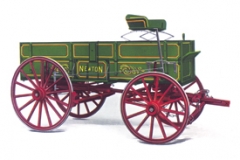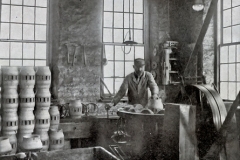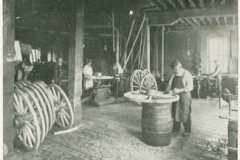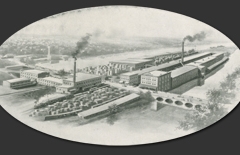
For 100 years beginning with its invention in 1749, the horse-drawn wagon was the primary way to travel over land when moving more than just yourself. The steam-powered locomotive wasn’t invented until the early 1800s in England, and wouldn’t become popular for passenger travel in the United States until just before the Civil War. But, of course, trains traveled only where the tracks went — so all during the 1800s, wagon travel remained an important way to get around.
The Newton Wagon Company was founded in New York State by Levi Newton, circa 1840. In 1854, after Mr. Newton’s factory was destroyed by fire, he moved westward, as so many people did, intent on finding a new location to rebuild his business. He settled in Batavia and built a new factory to make farm wagons. He made 36 wagons and 35 buggies during his first year in business — but by 1872, he was making 1200 wagons and 250 carriages per year. And by the 1880s, he was making 4,000 to 5,000 wagons per year, and had become one of the largest wagon factories in America.
In 1916, his family sold the company to new investors, interested in adding automobile bodies and fenders as well as other farm implements. In 1937, the company began making refrigerated truck bodies for hauling milk, under the name Batavia Body Company. In 1955, Batavia Body Company was purchased by American Gage and Machine Company of Elgin, and by the 1960s, the company was focused on providing insulated and refrigerated equipment for customers like Dean Foods, the Borden Company, Bresler Ice Cream, and Ekrich Meats. American Gage, still in existence today, ceased the operations of Batavia Body Company in June of 1973.




